Editor’s Key Takeaways: Capture Delicious Food Photos: Beginner’s Guide

This blog post provides an in-depth guide to help beginners in food photography create stunning, professional-level images using simple equipment and techniques. Here is a summary:
- Essential Equipment: You don’t need an expensive studio. A camera, lens, budget tripod, and a window are sufficient.
- Settings to Know: Understand basic camera settings to enhance your shots.
- Lighting: Use natural or artificial light effectively to make the food appear appetizing.
- Simple Backgrounds: Keep the background uncluttered to focus on the food.
- Angles and Composition: Experiment with different angles and improve your composition skills for better photos.
- Food Styling: Arrange the food creatively to enhance its visual appeal.
- Portfolio and Ingredient Shots: Expand your portfolio and capture fresh ingredients to add variety.
- Learn and Practice: Learn from other photographers and create a sense of depth and human elements in your photos.
By applying these tips and practicing consistently, you can achieve eye-catching food photographs.
Introduction
Ever wondered how to translate the mouthwatering flavors and textures of your favorite dishes into stunning photographs? When I first started food photography, I felt overwhelmed by the challenge. But after weeks of experimentation in my home kitchen, I discovered something surprising: creating professional-looking food photos isn’t nearly as complicated as it seems.
Here are two key insights that changed everything:
- You don’t need an expensive studio setup. Professional-quality shots can be achieved with just a camera, lens, budget tripod, and window light.
- Most professional food photographers rely on a core set of proven techniques. Once you master these fundamentals, you’ll be well on your way to creating stunning images.
This comprehensive guide shares the essential techniques, insights, and food photography tips I’ve developed over years of practice. Whether you’re a complete beginner or looking to refine your skills, you’ll find actionable advice to help you capture more appetizing images.
Essential Food Photography Equipment
Great food photography starts with the right tools. But here’s the good news: you don’t need to invest thousands in equipment. Let’s look at the essential gear that will help you create professional-quality images:
An Interchangeable Lens Camera
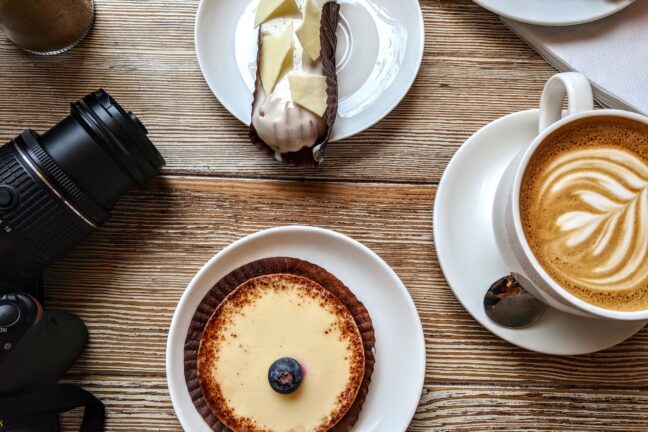
Think of your camera as the foundation of your food photography setup. While smartphone cameras can capture decent food photos, an interchangeable lens camera offers several key advantages:
- Greater control over depth of field
- Better performance in low light
- Flexibility to use specialized lenses
- Higher image quality and resolution
A Macro Lens
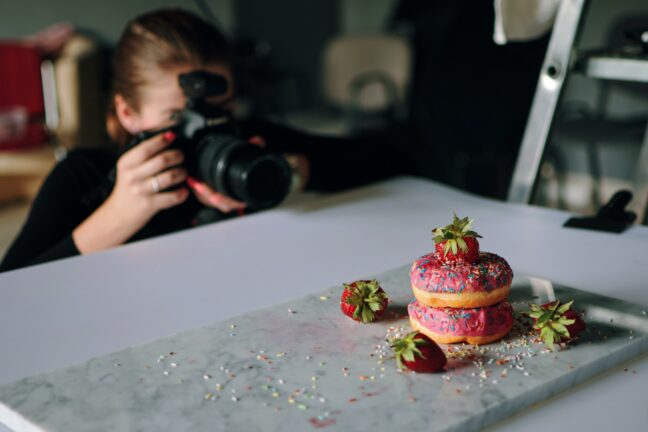
A macro lens is designed for close-ups and lets you capture delicious details. Want to showcase the glistening syrup on a stack of pancakes or the fresh dew on a strawberry? A macro lens gets you right there.
Of course, not all food photography takes place at high magnifications, but macro lenses are unique in that they can capture both wider and close-up shots.
As with a food photo camera, you don’t have to break the bank for a top-of-the-line macro lens. There are plenty of budget-friendly macro lenses that will serve you well. I got started with a cheap, used lens, and over a decade later, I’m still impressed by its optical quality.
A Tripod
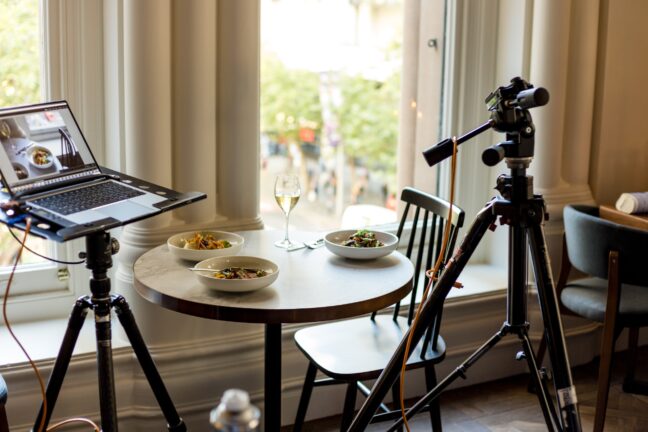
A tripod keeps your camera steady, and in food photography, which often takes place in dark interiors, stability is key.
Some food photographers work without tripods, but unless the food is very well lit – by strobe lighting, for example – I don’t recommend this. A tripod will also force you to spend more time considering your framing, and in my experience, this results in consistently better shots.
A tripod doesn’t have to be an expensive piece of kit; a simple beginner tripod will do the job.
The Settings Every Food Photographer Should Know
Understanding your camera settings is like knowing the right temperature for baking – it’s essential for consistent results. Here are the key settings to master:
Camera Mode
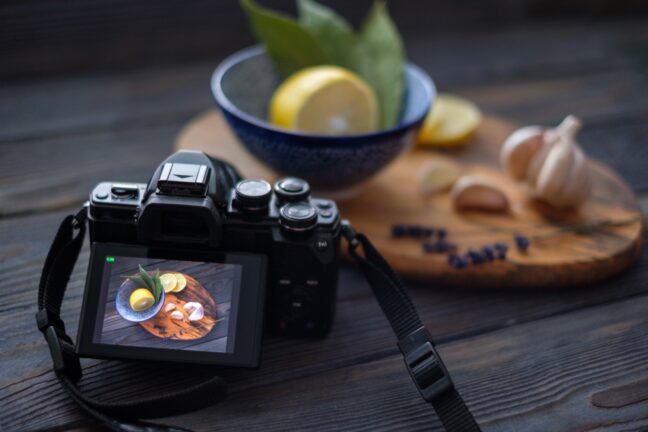
If you want extreme control over your food photos, then I highly recommend shooting in Manual mode. It might seem intimidating at first, but with your camera set to Manual, you control the shutter speed, aperture, and ISO. It’s how you can create beautiful exposures full of delicious details, sharp subjects, and creamy background blur.
Aperture
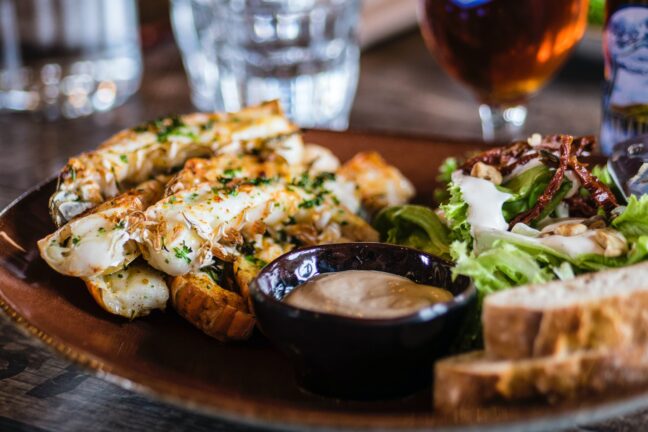
The aperture is like the eye of your camera. Want to let more light in? Widen that aperture by selecting a lower f-number. A wide aperture (like f/2.8) will also blur the background, making your food the star of the show.
I often work with a wide aperture, but if your shots are turning out too blurry, consider choosing a higher f-number, like f/8 or f/11.
Shutter Speed
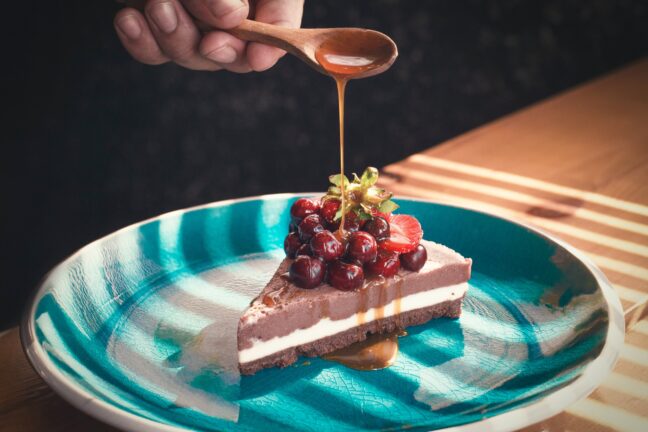
A fast shutter speed freezes motion, so if your food arrangement includes action, such as a sauce drizzling onto the plate, you’ll want to keep your shutter speed at around 1/200s or above. But if you’re looking to capture something static, like a pie cooling on a windowsill, a slower shutter speed works just fine (assuming you’re using a tripod, that is!).
ISO
Ever baked bread in a dimly lit kitchen? ISO’s a bit like turning up the lights so you can see what you’re doing. A higher ISO allows you to shoot in lower light, but be aware that it can add grain to the photo.
It’s a balance you’ll learn to strike with practice, but when you’re just starting out, working with a lower ISO is generally better. I often just set my ISO to a low value, then I leave it unless I absolutely need to boost the exposure.
Focusing Mode
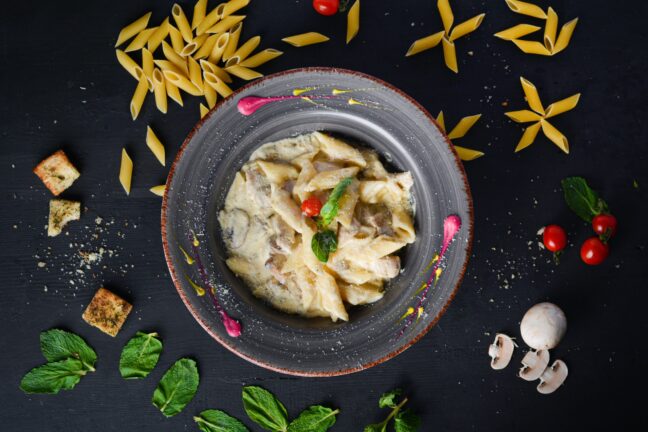
The last thing you want is a blurry main dish, so use single-point focus to identify exactly where you want your lens to focus. And if you’re not getting good results, switch your lens to its manual focus setting. It might take longer, but the extra precision will be worth it.
11 Tips for Mouthwatering Food Photos
Now that we’ve covered the basics, let’s dive into specific techniques that will help you create more appetizing images. Each tip builds on the fundamentals while adding creative possibilities to your photography:
1. Learn to Light the Food
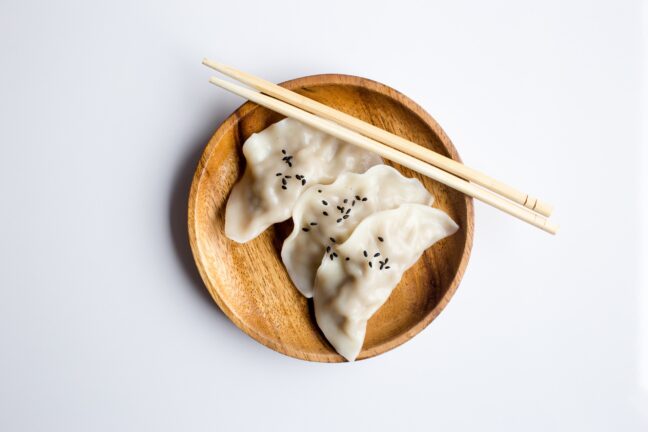
You’ve probably noticed that food in some photos looks utterly delicious while in others it falls flat, and while this can be caused by a variety of factors, the biggest culprit is often lighting. In my experience, lighting’s the secret sauce that can make or break your food photos.
As a food photography beginner, window light is your best friend. It’s natural, soft, and very flattering – as long as the harsh sun isn’t shining directly onto the food. But what if the sun’s not cooperating? Consider waiting until the sun has changed position, or cover the window with a diffuser (which you can make using a simple white sheet).
You’ll generally want to position your food so the window light hits it from the side and slightly from the back. This backlight-sidelight approach is wildly popular because it provides nice ambience and boosts subject texture by creating shadows.
That said, you don’t want your images to be shadow-heavy. Make sure that the food is highly visible in your images, and carefully adjust your exposure to maintain detail in the darker portions of the scene. Reflectors can also be helpful; a simple piece of white cardboard or a dedicated reflective board can bounce that window light back onto your food to fill in shadows. (Personally, I’m a fan of five-in-one reflectors, which don’t cost much and allow you to create a variety of looks with a single product.)
Over time, you may want to consider investing in some artificial lighting for your food photos, but when you’re starting out, window light is all you need.
2. Use Simple Backgrounds
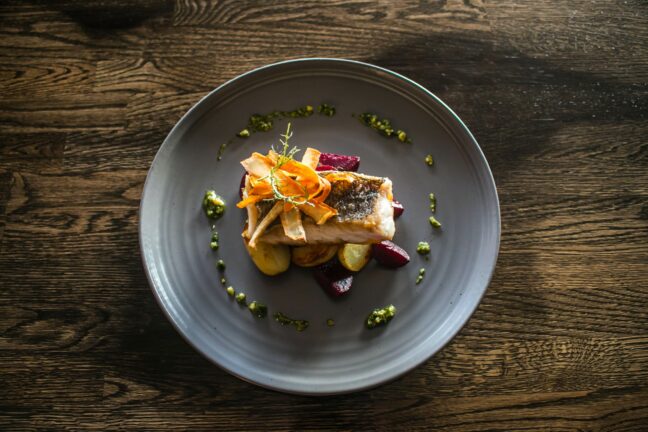
If you’ve ever felt your eyes wandering all over the place in a busy food photo, it might be the background’s fault; distracting backdrops can get in the way and steal the food’s spotlight.
On the other hand, simple backdrops – plain or textured paper, for instance – help the food pop. Think of your food as the lead singer and the background as the backup vocals. The backup singers are there, they matter, but they shouldn’t steal the show.
You don’t have to stick to paper. A wooden table, a simple cloth, a worn baking sheet – they all add character without shouting, “Look at me!” And if you want to get fancy, a marble slab can mimic a luxurious kitchen countertop. Just a small piece is enough.
In that vein, it’s important to recognize that you don’t have to use a real background to get a natural look. I like to spend time looking through craft shops and even home improvement stores for materials. Flooring samples and garden tiles don’t cost much, but they can look great as food photo backgrounds and surfaces.
Color matters, too. Complementary colors make the food stand out. Got a green salad? Try a basic orange background! Simple doesn’t mean boring. It means letting the food be the hero.
3. Experiment with Angles
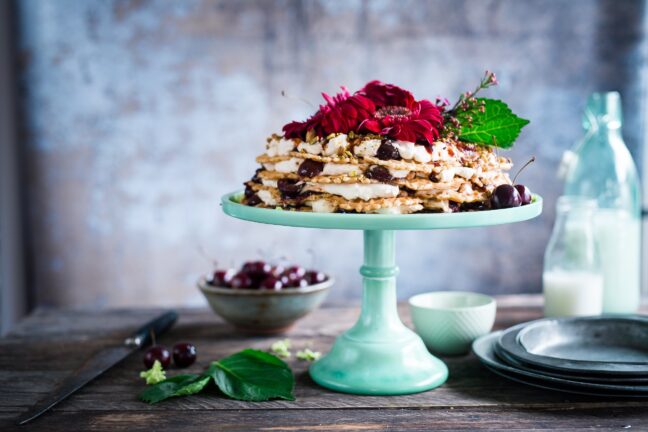
Food’s like people: It has good sides and bad sides. A burger might stand tall and proud, best shot from the side, while a bowl of soup might look great from above, showing off its colors and textures.
Every food is different, and finding the right camera angle can be a process. Move around, up, down, side, 45 degrees. See how the food looks from each position. And recognize that the ideal angle depends not just on the food, but on the overall arrangement of dishes. If your setup features layers, show them off by shooting from the side. On the other hand, if you have an expansive spread of colors and textures, photograph from above.
There’s no right or wrong here. Just what feels right to you. So get down on your knees, climb on a chair, or just tilt your head. Find those angles, and make that food look its best.
4. Work on Your Composition Skills
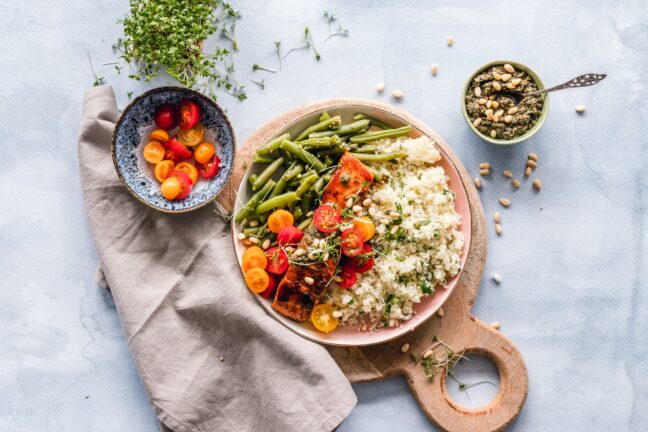
Composition refers to the way you arrange the food in each frame. This can sound confusing, but food photographers often rely on basic guidelines to keep their arrangements looking good, and you can do the same.
I’m a big fan of the rule of thirds. Imagine your image is divided into nine equal parts by two vertical and two horizontal lines, then try placing your main subject along these lines or at their intersection. It’s a neat way to keep your photos both dynamic and balanced.
Minimalism can work wonders, too. Just a plate, a fork, and a mouthwatering slice of pie can look amazing. Sometimes less really is more.
Fancy playing with numbers? The rule of odds is another favorite of mine, and it suggests that an odd number of elements is more interesting to the eye. Three scoops of ice cream, five slices of apple, seven pieces of sushi – you get the idea.
Finally, don’t be afraid to work with symmetry. A perfectly symmetrical dish placed in the center of the frame can be highly satisfying!
5. Practice Food Styling
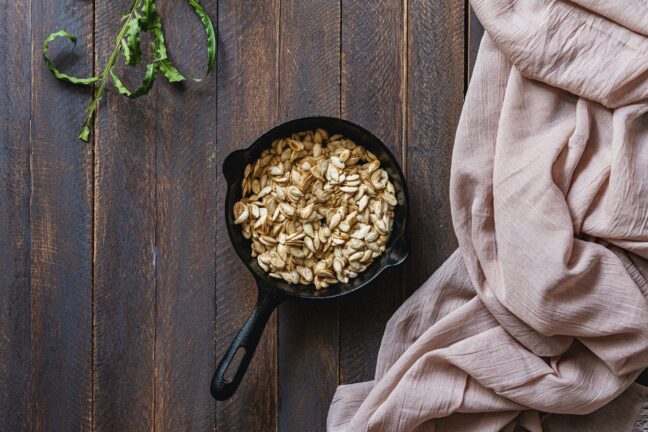
Even the tastiest dish needs a good presentation, and that’s what food styling is all about. Styling your food might sound complicated – I certainly felt that way when I got started – but it’s mostly just about simplicity and a touch of flair.
Got a plain dish? Jazz it up with a sprinkle of herbs. A boring bowl of soup? A dollop of cream and a parsley leaf could be all you need. And don’t overlook the props. Cutlery, napkins, and even a dash of spilled salt can turn a good photo into a great one. The right prop in the right place can instantly complete an arrangement.
Related Posts
Pro Tip: To find nice props, spend some time looking around your local thrift store. You’ll often manage to find a mix of antique and modern dishes, cutlery, tablecloths, and more. Plus, thrift shopping can be a lot of fun. I love looking through hundreds of plates and cups for the perfect piece!
Remember, however, you’re not dressing a runway model here. Keep it simple, and keep it real. Food arrangements should look good, but they should also look natural.
6. If You Can’t Cook, Find Someone Who Can
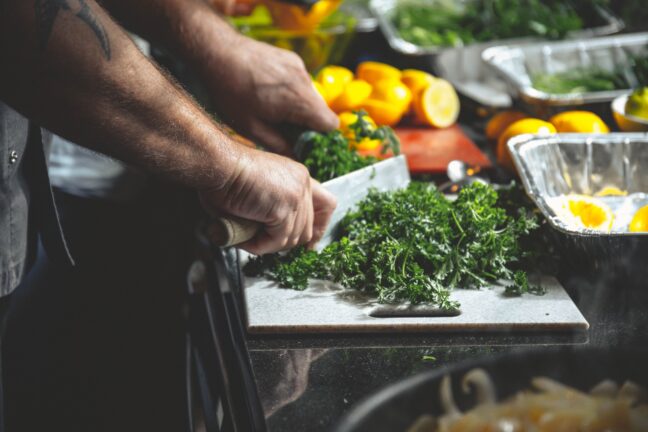
What’s a food photographer without food? You might be the next big thing behind the lens, but if you can’t cook, you need a partner in crime.
Find a friend who loves cooking. Maybe it’s grandma with her secret pie recipe or a buddy who grills like a champion. They cook, you shoot.
Shoot the cooking process. Capture the flour dusting, the sauce stirring, and the oven glow. That way, your images tell a story, a delicious tale that starts with the cutting board and ends on a plate.
Of course, if cooking’s your thing, then you can do it yourself, though you’ll need to be inventive if you want to photograph the cooking process. A remote release can be a handy accessory that’ll help you shoot and cook at the same time.
7. Expand Your Food Photography Portfolio
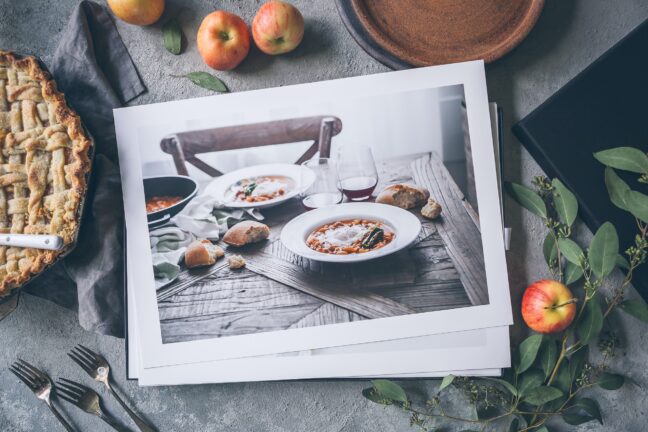
So you’ve been snapping away in the kitchen, and you’re ready to share your mouthwatering masterpieces. Great! Start by flaunting your best shots on social media. It’s a fantastic way to get feedback and build a following.
Once you start to get some positive feedback, consider going bigger. For instance, if you hope to photograph food professionally, then it’s time to design a website. No need to go overboard with this; there are plenty of solid portfolio website options for photographers, and they don’t take long to set up, either. My first website simply included a single portfolio page, a contact page, and some basic biographical information.
And remember, when displaying images, less is more. Only show your absolute best shots. Think of it as a gallery; you wouldn’t fill it with every painting, just the masterpieces. This selectivity isn’t a creative choice – it’s about putting your best foot forward to attract clients.
8. Photograph Fresh Ingredients
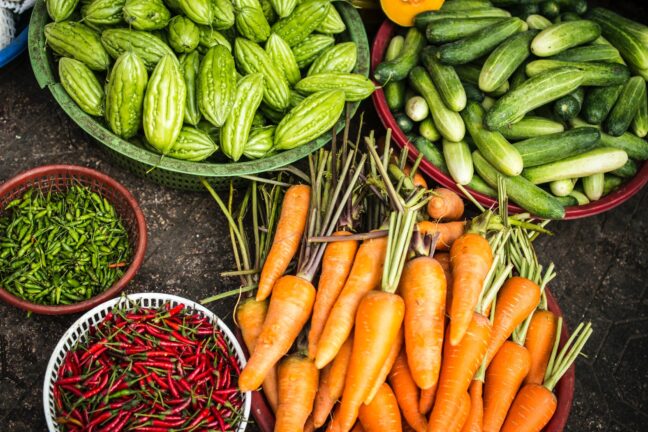
Fresh is nearly always best, especially when it comes to food photography. We’re not talking about taste here; we’re talking about looks. You want your ingredients to look their absolute best.
So hunt for the freshest, most vibrant colors at the grocery store. I like to spend some time really looking over each fruit and vegetable before placing it in my cart, and I recommend you do the same! And don’t stop there; for the best-looking dishes, implement some tricks of the trade. Want to show off a cold, refreshing drink? Try a spray of water mixed with glycerin to make it look like condensation. Are your ice cubes melting too fast? Invest in some acrylic ice instead.
And don’t forget the last-minute touch-ups. A dash of seasoning or a sprig of fresh herbs can transform a dish from flat to fabulous! Sometimes you’ll need to be quick to prevent dishes from wilting, so be prepared to work fast.
9. Learn from Other Food Photographers
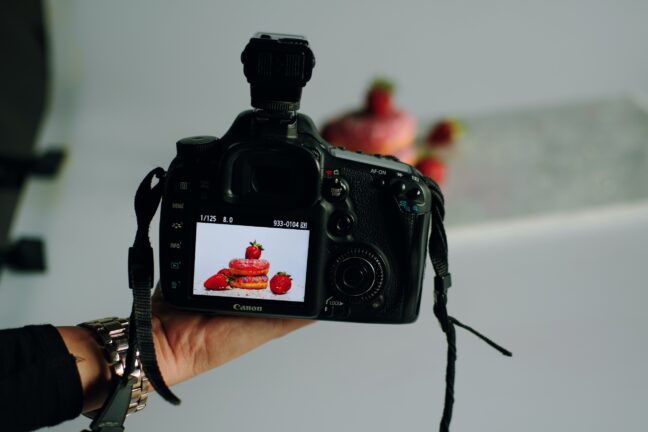
There’s a smorgasbord of food photography inspiration out there, so don’t try to reinvent the wheel. Instead, spend time each day viewing great food shots online. (I’m partial to Instagram because many of the best photographers post regularly, but Flickr, 500px, or even Lightroom Discover can also work.)
What makes you stop and stare? Is it the colors, the composition, or something else? Identify what you like and dislike about each shot, and consider sending messages to your favorite photographers asking for advice. Follow blogs, participate in forums, and don’t just be a silent observer; interact, ask questions, and share your thoughts.
Once you get really serious, I’d recommend diving into online food photography courses. Don’t shy away from attending workshops, either. Engaging with experienced photographers can give you hands-on practice and insights you never knew you needed.
And don’t forget to experiment! If you see a technique that fascinates you, try recreating it. Put your own spin on it. Because in photography, the best results often come from adding your own personal touch to a standard recipe.
10. Create a Sense of Depth
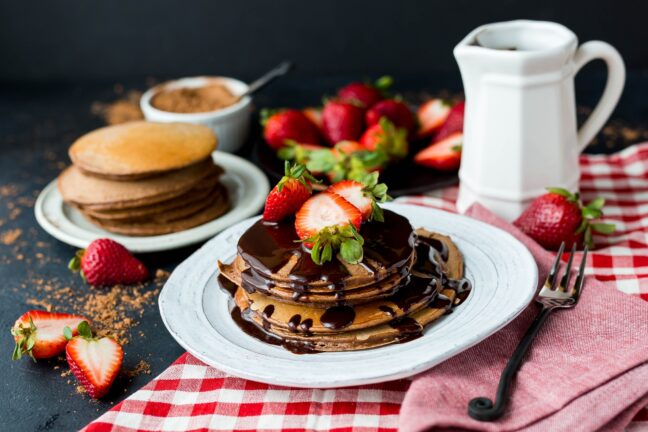
The magic of food photography often lies in creating an illusion of depth. You ever notice how flat and lifeless some pictures can look? That’s what you want to avoid.
Start by shooting with a shallow depth of field. This gives you that creamy background blur and helps the main subject pop. Then play around with layering your food. Imagine it’s a stage and you’re the director. Arrange it at different heights and distances, then photograph from a 45-degree or frontal view.
Experiment with different backgrounds like wood, fabric, or textured paper to add an extra dimension. Often, it’s small changes – like a switch from a plain background to a textured one – that really elevate your images.
And give yourself plenty of time! I’ll often spend at least 15 minutes creating an initial setup, then I’ll spend another 30-45 minutes fine-tuning the arrangement and my framing to get the right type of layering. (When I was a beginner, it often took even longer!)
11. Incorporate Human Elements
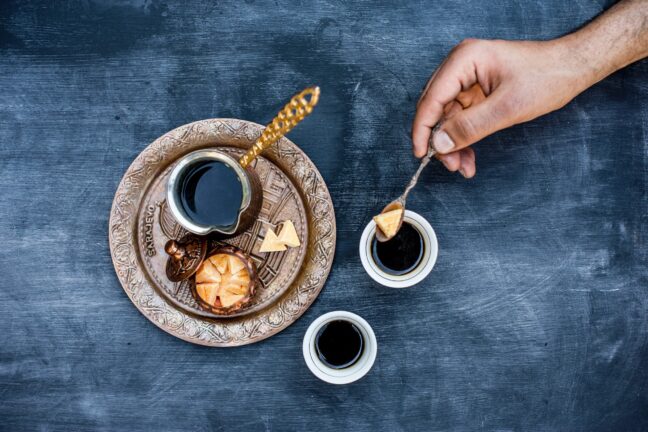
Sometimes, a subtle human touch can help make the setup more relatable. So if your images are feeling a little cold or emotionless, include a human element: a hand stirring a pot, a chef shaping dough, or fingers sprinkling a garnish.
Because it’s not just about the food; it’s about the love and labor that go into it. You can create behind-the-scenes vibes that breathe life into your images. Someone enjoying a meal or even just a hint of a person can lend a sense of authenticity.
You don’t always have to show the full hand or face, either. Less really can be more. Want to make the composition more artistic? Try shooting with the human part slightly out of focus, making the food the star but with a touch of human warmth.
Go Capture Food Photos Like a Pro!
Food photography is both compelling and highly rewarding. But as you dive into the genre, remember: While it’s not difficult to create stunning food shots, it’s not easy, either. Great food photos come from careful use of lighting and composition, not to mention an understanding of basic camera settings. To achieve the best images, you need to put in some real effort.
So make sure you practice. Get to know your gear, experiment with props, learn, grow, and most importantly, have fun. Start with the basic food photography tips I’ve shared, then let your creativity run wild!
Whether you’re pursuing a hobby or a budding career, these tips aren’t just ingredients; they’re the recipe for your success!
